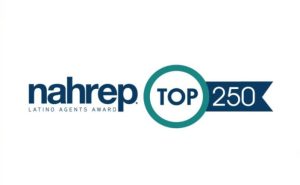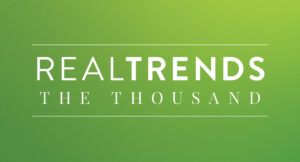Post Contributors: Sherry Chris, Marc Davison & Kevin Doell
One of the best parts of any industry conference is tapping into the collective brainpower of very bright and committed professionals. At Inman’s Real Estate Connect San Francisco we sponsored the “Real Estate Brokerage of the Future” breakout sessions.
To wrap up the sessions, we wanted to play to the strength of the attendees by getting them to interact and put down their best ideas on paper. Turning an afternoon panel session into a dynamic group workshop, we captured what the “Brokerage of the Future” should look like according to the 50+ attendees willing to role up their sleeves to share their ideas with colleagues and competitors alike.
The task before the audience was to split into four groups and brainstorm about four components of brokerages. Four facilitators worked with the groups, including, Marc Davison and Brian Boero of 1000 Watt Consulting; Rick Spencer, director of IT at Windermere; and Chris Crocker, of NRT.
Sherry Chris worked around the room with all the groups and did a quick wrap up.
From left: Crocker, Chris, Davison, SpencerThe groups tackled the following topics:
1. The Physical Presence: Redefine the real estate storefront. What would it look and feel like internally to the agents and externally to the public?
2. The Virtual Presence: What would the online offering be — from website to technology?
3. The Business Model: What would the arrangement between broker and agent look like it if could start from scratch?
4. The Consumer Gets… : What do consumers, want from a new real estate brokerage?
As Marc explained it, the most important criteria was to drop any preconceived notions and to think “blue sky.” After 30 minutes, a representative of each group briefed the whole audience on their top three ideas.
Today, we’ll start with “The Physical Presence” and the “Virtual” and go through the rest in our next post. Comments and criticism are welcome. More ideas to add? Better yet.
Sherry Chris provides her take below.
For another perspective, check out Marc Davison’s blog post on the same topic, written with his usual flair and interpreted through his analytical lens.
The Physical Brokerage Space of the Future
(Facilitated by Brian Boero):
- A smaller physical space
- 900-1,200 square feet
- With a modern conference room
- Multi-use area for the public to access
- Small work stations that serve all the agents
- Better Technology
- Dual broadband network that includes a secure network for internal agent usage and second unsecure public network offering free Wifi to the local community that extends as far out of the office as possible.
- Cool Environmentals
- Apple meets Starbucks
- Multi-media enabled
- Serving refreshments
Sherry’s Take
Everyone likes the “shared space” concept where nobody owns their workspace and everybody shares. If I was starting up a brokerage business today there is no doubt I would set up my offices that way. I have visited real estate offices that are set up this way in various cities and it feels right for the future of the business. The reality is though, that most existing companies are very heavily invested in bricks and mortar and it is financially challenging, if not impossible, to throw away existing office space and start fresh, particularly in this type of market.
There is the other problem of prying agents out of their private offices and telling them they have to share. Several years ago a Realty Alliance survey showed the average square feet per agent was in the 130-range. I am sure it is much lower today, but probably not low enough. A good measurement to use today is that you should be at least at 150{0a8e414e4f0423ce9f97e7209435b0fa449e6cffaf599cce0c556757c159a30c} capacity. So, for every 100 desks you should have 150 productive agents on your roster. If you currently have large offices, make them as productive as you can. And start thinking about how you want to reshape your business for the future. Think about the GenX and GenY agent of the future who feels more comfortable working out of an “Apple meets Starbucks” environment. Check out Nicolai’s recent post on “Designing the New Real Estate Office.” What do you think the ideal office should look like?
The Virtual Brokerage Space of the Future
(Facilitated by Rick Spencer):
1. The Omniscient Consumer easily accessing all property data available in MLS along with an objective view into an agent’s reputation and connections with mortgage brokers, title providers, etc. This transparency includes what work agents are doing on the behalf of consumers, how they are getting paid, and how much they are getting paid.
2. The Broker as Listings Funnel. The logical conclusion of the shift towards listing aggregation sites results in brokers no longer maintaining separate web site silos, but rather brokers providing listings to “the cloud” on behalf of the agents. Consumers use their tool of choice to find listings they are interested in. The “traffic” from the cloud (buyers) is farmed out to agents most likely to provide a great customer experience. The broker no longer uses an MLS, as they are syndicating their listings to the cloud directly. The broker provides a team of specialists to provide services to agents, such as entering data, creating copy, formatting media, etc…
3. Agent and Consumer Choice. Radical transparency and new tool sets allow agents to create their own business models i.e., some become fee based, some hourly, some different commission structures. Consumers can take bids from agents, and choose a business model that suits them. Agents will be able to form teams that provide a variety of business models, and a variety of specialized services.
Sherry’s Take
Here the group talked about “radical transparency” and syndicating listings to a “cloud” – now that is pretty far out the for the brokerage world… or is it? I think most of us have come to terms with the transparency piece and the importance of it. We are entering the age of the consumer being in control, and if they don’t get all of the information they need from us, they will quickly go elsewhere and not come back. The syndication of listings has gone mainstream and the race is on to see who will end up with the most listings and who can offer the better user experience. Heck, in just the week since we have launched, I had agents contact us asking if they could put their listings on our site — and they were with competing brokerages. I took it as a compliment, but also thought, maybe we could be on to something. Will a “cloud” replace MLS? What are your thoughts?
What do you think?
Plenty to comment on here. Is the big office dead? Are offices necessary at all? Who benefits the most? Does the MLS have a rightful place? Isn’t there already enough choice in the marketplace?
Tomorrow we’ll post the group’s ideas on the broker/agent relationship and what the consumer wants
The “Not So Fine” Print
The opinions expressed on this site are the opinions of the participating users and may not necessarily reflect the views of Better Homes and Gardens Real Estate LLC, Realogy Corporation, or its affiliates, parents, and subsidiaries. 1000Watt is currently working with Better Homes and Gardens Real Estate LLC in a consulting capacity.










